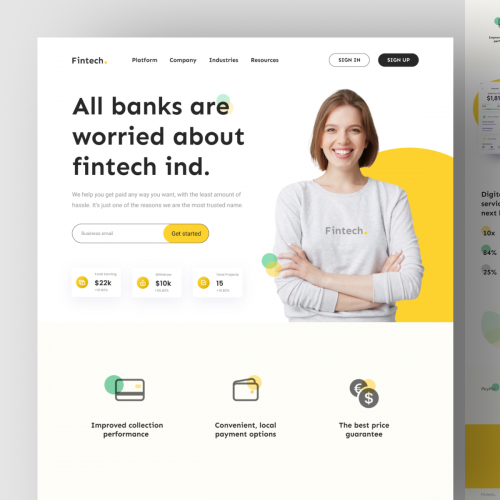Skilled Website Design Services to Build a Stunning Online Presence
Leading Tips for Developing an Impactful Site Layout That Converts
In today's electronic landscape, the relevance of an impactful web site design can not be overemphasized, particularly when it comes to converting visitors into customers. To attain this, one have to think about a selection of elements, including recognizing the target audience, prioritizing customer experience, and maximizing for mobile platforms. The calculated usage of engaging call-to-actions and a well-defined aesthetic power structure plays an important function in directing individuals via their trip. As we check out these crucial aspects, it ends up being obvious that the success of your internet site pivots on more than just aesthetic appeal; it needs a thoughtful strategy to style and capability.

Understand Your Target Market
Understanding your target market is basic to effective website design, as it prepares for creating an appealing customer experience. Identifying that your individuals are, including their demographics, choices, and habits, makes it possible for developers to tailor the web site's material, format, and capability to satisfy particular demands.
Carrying out extensive marketing research is essential in this process. Surveys, meetings, and analytics can offer important insights right into customer assumptions and discomfort points. By assembling this data, designers can create individual personalities that represent various segments of the audience, guaranteeing that layout choices are informed and relevant.
Furthermore, recognizing the target market assists in selecting ideal design components such as color systems, typography, and imagery that reverberate with users. A web site that talks directly to its target market promotes a feeling of connection and trust, encouraging longer visits and greater conversion prices.
Eventually, a user-centered approach to web site layout not only improves individual fulfillment yet additionally supports company objectives by driving involvement and loyalty. By prioritizing the requirements and choices of the target market, a site can properly serve its objective and attain preferred outcomes.
Prioritize User Experience
To improve the total efficiency of a web site, focusing on individual experience (UX) is necessary (Website Design). A properly designed UX ensures that site visitors can navigate the site effortlessly, locate info quickly, and engage with material meaningfully. This leads to enhanced customer satisfaction and greater conversion prices
Begin by implementing intuitive navigating. Menus needs to be practically structured, allowing individuals to situate vital areas of the website with minimal effort. Consistency in design aspects, such as color pattern and font styles, promotes knowledge, which is critical for preserving customer involvement.
In addition, think about the filling speed of your site. A hold-up of simply a couple of seconds can bring about substantial drop-offs, as users are less likely to await a slow-loading web page. Simplifying pictures and enhancing code can boost efficiency and preserve visitors.
Additionally, quality in content discussion is important. Use concise, appealing language and damage up message with visuals to improve readability. By prioritizing user experience, you not just create a more satisfying environment for visitors but additionally reinforce your brand name's reliability. Eventually, a focus on UX is an investment in the lasting success of your website.
Enhance for Mobile Instruments
Enhancing for mobile phones is crucial in today's digital landscape, where an increasing number of users access sites through smartphones and tablets. A mobile-friendly layout not just improves user experience yet also plays a significant role in improving internet search engine rankings. To accomplish this, it is important to embrace a receptive style that instantly readjusts to different screen dimensions and positionings.

Filling rate is one more vital factor; mobile users are normally much less patient and anticipate quick access to information. By focusing on mobile optimization, you guarantee that your site remains affordable and efficiently involves a wider target market.
Usage Engaging Call-to-Actions
A web site's efficiency often hinges on its capability to guide visitors toward wanted actions, making engaging call-to-actions (CTAs) essential components of design. CTAs act as the index critical points that route customers to involve with the site, whether that means making an acquisition, enrolling in an e-newsletter, or downloading a resource.
To produce effective CTAs, clarity is extremely important. Use concise language that clearly connects the action you want the customer to take. Phrases such as "Begin," "Subscribe Free," or "Store Now" not just share necessity yet also eliminate ambiguity. The positioning of CTAs is equally crucial; they ought to be purposefully positioned throughout the webpage to ensure they are easily visible, specifically in high-traffic areas.
In addition, the style of CTAs should stick out without being interfering. Utilize contrasting shades and clear fonts to guarantee they catch focus. Furthermore, consider utilizing directional hints, such as arrowheads or images, to direct users toward these buttons. By concentrating on these aspects, businesses this post can significantly enhance customer involvement, driving conversions and inevitably attaining their web site's goals.
Concentrate On Visual Power Structure
Reliable site design depends greatly on a well-structured aesthetic pecking order that overviews individuals via web content effortlessly. By arranging aspects in a way that focuses on information, designers can enhance individual experience and help with decision-making. This includes using dimension, shade, comparison, and spacing purposefully to draw focus to the most crucial components of a page.
Using larger font styles for headings and subheadings develops a clear difference between various areas, allowing customers to scan content easily. In addition, employing contrasting shades for buttons and calls-to-action can catch individual focus and encourage interaction. Whitespace is one more essential component; it avoids clutter and allows individuals to concentrate on essential messages without distractions.
Photos and graphics need to match the text while likewise sticking to the well-known pecking order, strengthening the total message (Website Design). Consistency in layout aspects, such as color pattern and typography, additional reinforces the aesthetic power structure, making navigation user-friendly

Verdict
In final thought, reliable web site style requires a detailed understanding of the target audience, prioritization of individual experience, and mobile optimization. Eventually, a well-executed website design serves as an essential element in driving user activities and accomplishing service goals.